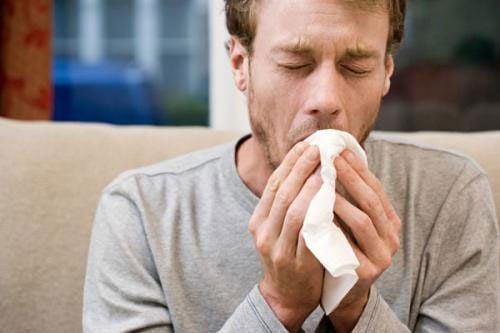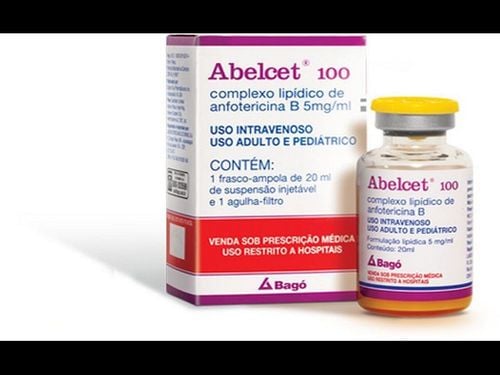This is an automatically translated article.
Deep fungal disease is a chronic disease and the source of the disease is usually in the external environment such as: leaves, soil, ... They penetrate through the skin and respiratory tract, patients often show lesions in the skin and mucous membranes. , subcutaneous tissue, bones, joints, nerves and other organs.
1. What is deep fungal disease?
Deep fungal disease is a chronic disease, the source of the disease is in the environment from the outside such as soil, leaves,... The disease penetrates through the skin and respiratory tract. Some deep fungal diseases are opportunistic fungi, seen in immunocompromised patients such as candidiasis, cryptococcosis, histoplasmosis,... All fungi are aerobic except for actinomyces israelii. Therefore, the fungi can be easily isolated using sabouraud's medium at laboratory temperature. The fungus grows very slowly, requires about 1-5 weeks, so only negative results after 1 month of culture do not grow.
Deep fungal disease mimics many chronic diseases, so it should be diagnosed by fungal culture. There is no absolute distinction between superficial and deep fungal diseases because one fungus can cause both skin and visceral disease, such as candida albicans. Patients with fungal infections of the subcutaneous tissue often have skin-related signs. For patients with systemic fungal infections, there are not only skin lesions but also manifestations in other organs of the body.
2. Some common fungal diseases

Bệnh nấm sâu là nấm cơ hội, gặp ở bệnh nhân suy giảm miễn dịch như candidiasis, cryptococcosis, histoplasmosis
2.1 Candida Candida is a very small yeast that is common in nature in a saprophytic form and rapidly becomes pathogenic when conditions permit. Fungi can cause lesions in the skin, mucous membranes, nails, also known as superficial Candidoses, causing damage to the senses such as eyes, ears, nose and throat, capable of spreading through the bloodstream into the internal organs. Visceral candida.
This fungus has no cysts, has pseudofilaments, reproduces by germination. Yeast species that grow on fruits and vegetables, especially many on apples and pears, begin to rot. In production yeast is found in fruits used in confectionery, cakes, and jams, as well as in syrups and confectionery. Normally, yeasts are still living saprotrophs in the gastrointestinal tract, on healthy skin as well as in the mucous membranes of humans and animals.
Candida fungal diseases are divided into two groups:
Superficial candidiasis including candidiasis of the skin, mucous membranes, and nails and periungitis Deep Candidoses including candidiasis of the eyes, ears, nose, throat, intestines, visceral organs and brain called Systemic Candidoses. In addition, there is a common childhood systemic Candidose that is considered to be intermediate between Superficial Candidose and Deep Candidose
2.2 Cryptococcosis Disease caused by Cryptococcus neoformans, a yeast with special affinity for the nervous system central nervous system. The fungus Cryptococcus neomans is commonly found in soil, pigeon droppings, chicken and duck droppings. In chicken coops and pigeon pens, fungal spores can persist for years. The fungus can also be found in Melaleuca forests in Australia. Transmitted to humans by contact with fungal spores or by hunting.
The fungus is first localized to the lungs, but at this stage symptoms are very minimal such as low-grade fever, chest x-ray shows diffuse interstitial pneumonia or infiltrates, or wall of an abscess. based on testing for Cryptococcus in sputum or bronchoalveolar lavage.
Symptoms in the lungs sometimes do not find the cause, but the fungus has spread to the central nervous system causing meningitis - brain. The disease manifests itself very slowly, the patient feels a persistent headache, the pain relievers are ineffective, accompanied by nausea and vomiting. Sometimes neurological and mental disorders such as stiff neck, walking disturbances, confusion, seizures, respiratory disorders and coma are sometimes present.
Prognosis is poor, often fatal and after several weeks or months. Mortality rate of one-quarter of patients despite treatment. Other organs such as bones, kidneys, liver, marrow, lymph nodes and even skin are damaged as a result of a fungal infection into the bloodstream.
Fungi can penetrate first into the skin, the mucosa is traumatized causing a slightly rough ulcer, not prone to scarring, but sometimes it goes away on its own. The fungus can also enter the bloodstream, spread throughout the body and then reside in the skin in many forms such as well-demarcated, multi-arched, purple-red, sometimes thick horny patches surrounded by a red pellet. pink, soft-touch lesions. These plaques rapidly necrosis to form a shallow, chronically progressive ulcer.

Nấm histoplasmose gây biểu hiện ho
2.3 Histoplasmose Histoplasmose is a deep fungal disease caused by strains of Histoplasma. Currently, people are divided into two types: American Histoplasmose affects mainly the lungs; African histoplasmose, affecting the skin, lymph nodes, and bones. This disease used to be rare, but is now increasing with AIDS. Histoplasmosis of the Americas, also known as Darling's disease or small cell histoplasmosis, is caused by the fungus Histoplasma cupsulatum growing inside the inner retinal cells of the retina. tissue. These are small yeast cells 1-3 microns in diameter. Fungi reproduce in two different ways, depending on the environment. That's why it's called a binomial mushroom. In the mechanism of fungi reproduction by germination. In the natural environment and in the culture, the filaments and filaments produce spores. The source of the fungus is soil containing the boundary, which is abundant in caves with many sexes. People get sick from breathing in air that contains many fungal spores. People of any age can get the disease, but it's most common in children.
Fungi enter mainly by respiratory tract, accounting for about 70%. The patient presents with a syndrome as follows: Fever, fatigue, sometimes coughing up blood. Chest x-ray showed dark hilar lymph nodes and variable opacities. Usually the treatment is cured and there are calcified nodules in the lungs.
Skin and gastrointestinal lesions are very rare. From the lungs the fungus can spread by the bloodstream and the retinal endothelial system causing very serious disease, but fortunately, it is rare. Presented as moderate or high fever, enlarged lymph nodes, enlarged spleen, loose stools (with ulcers in Payer's plaque), intestinal perforation, general collapse. There is damage to all viscera (oral mucosa 30-35 %; adrenal gland 50%), bone, kidney, nerves. Histoplasmose may be localized only in the lungs, causing pulmonary emphysema manifested as coughing, coughing up cough. Blood, fever, chest X-ray shows infiltrates, or uniform opacities. The more advanced the disease, the more difficult it is to breathe.
Diagnosis is confirmed when fungi are found in sputum by fresh smear, Giemsa, PAS or Grocott infection. Fungi are small yeast cells 2-4 microns located inside monocytes. Or culture on Sabourauel medium.

Bệnh nhiễm nấm càng tiến triển càng gây khó thở.
Culture requires caution because it is contagious. It is possible to give infusion to Hamsters.
The main treatment is fongizon intravenous infusion until it is cured, especially for disseminated disease, with a dose of 1mg/kg body in 1 day. The drugs daktarin, nizoral, sporal, diflucan are all effective, but they also have to be used for a long time.
In short, deep fungal diseases are diseases that cause damage to the skin, mucous membranes, subcutaneous tissues, bones, joints, internal organs and nerves. The disease is progressive and difficult to treat. Therefore, when there are abnormal manifestations in the skin or mucous membranes, suspecting a fungal infection, it is necessary to immediately go to a medical facility for examination and treatment.
Vinmec International General Hospital with a system of modern facilities, medical equipment and a team of experts and doctors with many years of experience in medical examination and treatment, patients can rest assured to visit. examination and treatment at the Hospital.
Please dial HOTLINE for more information or register for an appointment HERE. Download MyVinmec app to make appointments faster and to manage your bookings easily.
MORE
Mold allergy: Symptoms, diagnosis and treatment Diagnosis and treatment of lung fungus Nail fungus: Causes, symptoms, diagnosis and treatment













